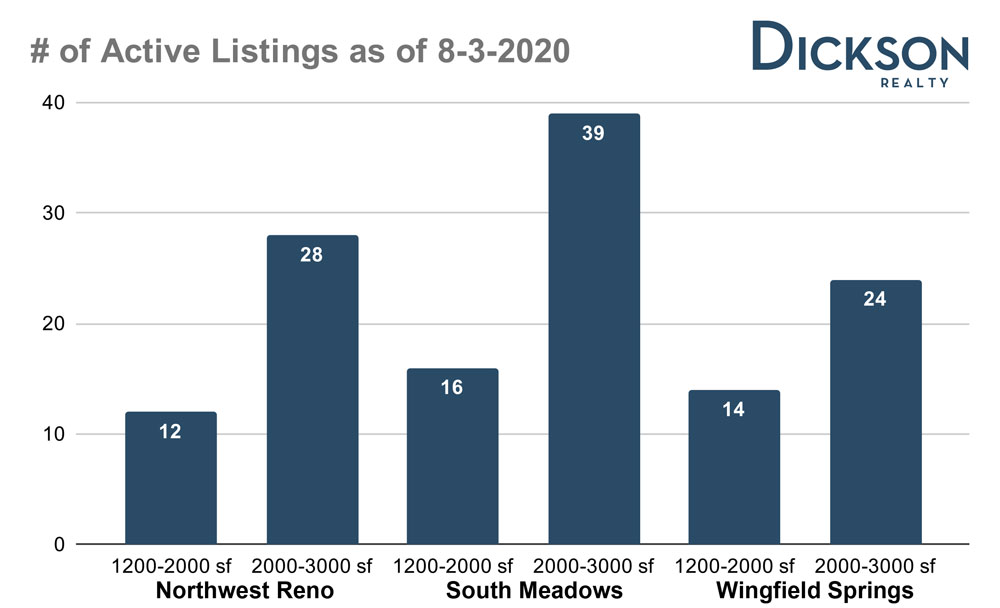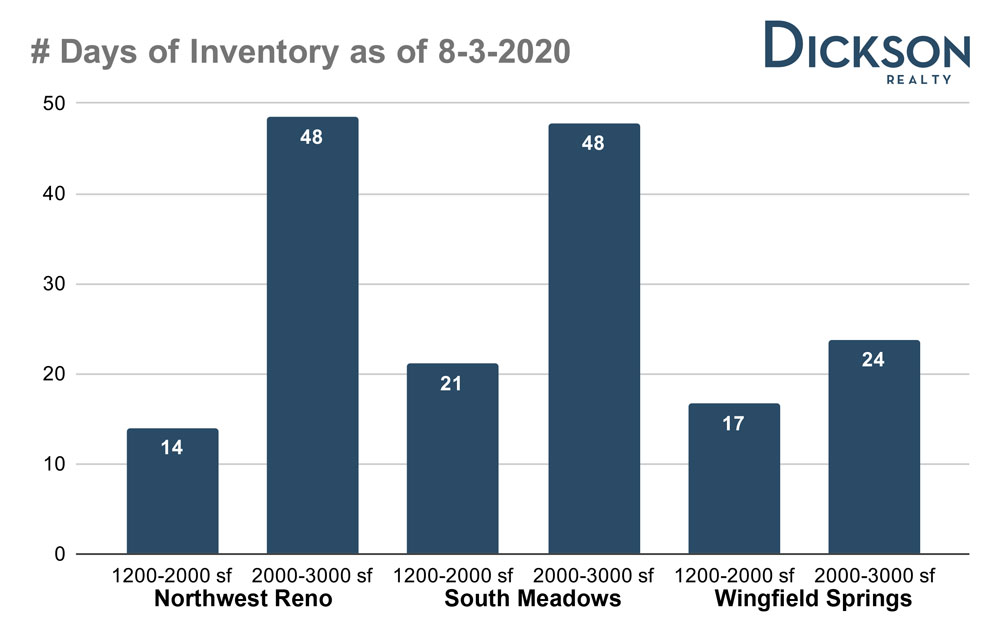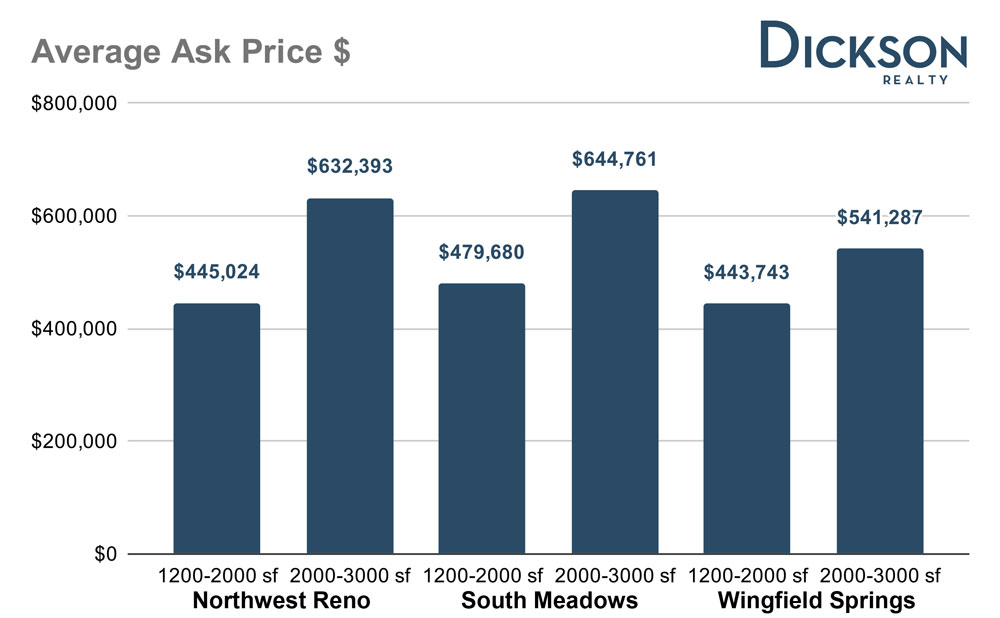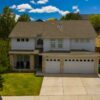As the world turns to virtual learning, virtual working, and more time spent at home, more people are thinking about buying a bigger house. In the Reno/Sparks housing market, there is currently a unique set of circumstances that make this desire more achievable for some homeowners than they may think.
“If you have a more affordable home to sell and you’re looking to move up in the market, you are going to be in a situation where you have a really competitive listing, and then you’re going to have more homes to choose from at a higher price point,” said Beau Keenan, President of Dickson Realty. “So, it’s an ideal setup.”
3 Reasons Buying A Bigger House In Reno/Sparks Is Possible
Three factors make it possible for some homeowners to buy a bigger house: low interest rates, low inventory at lower price points, and higher inventory at higher price points.
-
Interest rates continue to remain near historic lows.
Rates for a 30-year fixed mortgage hit the lowest point in nearly 50 years near the end of May and early June. This means that buyers could have up to $30,000 more in buying power than they did just a year ago.
-
Fewer homes are for sale in the less than $300,000 and $300,000 to $600,000 range, creating a seller’s market at those price points.
A month’s supply of inventory is the time it would take to exhaust the active inventory at the current rate of sales. We currently have one month of supply at our median home price range of $300,000 to $600,000 (Median sales price for single-family homes in Reno/Sparks at the end of July was $435,000). If no additional new listings came into the market, with the demand we have right now, we’d be out of listings in about one month in that price range. Historically, a balanced supply is six months of inventory. Below that is considered a “seller’s market” and above that is regarded as a “buyer’s market.”
-
Generally, as the price point for homes increase, the amount of inventory on the market increases as well, as does the size of the property and the amenities in the home.
As a result, there are fewer, small, lower-priced homes on the market currently than there are larger, higher-priced homes. So, if you own a home that would sell for less than $600,000 and have a reasonable amount of equity in that home, then you might be able to leverage that with low-interest rates to purchase a bigger house.
Reno/Sparks Housing Inventory By The Square-Foot Numbers
To help illustrate the difference in inventory between different homes of different sizes, we took a look at the number of active listings and days of inventory for three very popular northern Nevada suburban neighborhoods: Northwest Reno, South Meadows, and Wingfield Springs. In each of these neighborhoods, the number of homes in the 2,000-3,000 square foot range was usually double that in the 1,200-3,000 square foot range.


Another interesting fact to note is that as the homes increase in size, the value per-square-foot improves as well. In looking at home sales over the past six months, the price per square foot for homes in these neighborhoods for 2,000-3,000 square-foot-homes was generally between $35-$50 less than homes in the 1,200-2,000 range. This is also demonstrated by the average asking prices of homes in these neighborhoods.

How To Trade Up For A Bigger Home
If you want or need to buy a larger house (hello, Zoom room!) and think that these three factors might work in your favor, then we’d suggest taking the following steps.
Find you your home’s current equity by working with a Realtor
Automated valuations are rarely an accurate representation of your home’s true and current market value. A local real estate agent, like one of our neighborhood experts, will be able to help gauge how much your home is worth based on up to the minute market trends. It’s also essential to work with an agent who will help you take advantage of northern Nevada’s fast-paced real estate market.
“You need to have an agent who is on it,” said Chris Galli, Vice President of Relocation for Dickson Realty. “If you don’t have someone who’s on your side, who’s ready to pull the trigger on something with you, then you’re going to miss it.”
Define what you want in a bigger home
Because of the difference in inventory between price points, it’s likely that there are more larger homes available than you think. If a dedicated office space, home gym, playroom, or outdoor living area is on your list, then it’s essential to communicate that to your agent.
“I’m seeing many buyers who want to be self-contained in their homes—they want a set up where they would feel comfortable quarantining again, and that’s fueling their desire to move up to a larger home,” Galli said.
Work with your REALTOR to get the lay of the land
Once you know what you need in your bigger home, it’s time to see what’s available. Being flexible about location in the region can also help you move to a bigger house without a substantially higher monthly mortgage payment, Keenan said.
“If someone is mostly focused on moving up to have a bigger home and a bigger lot, it’s possible to achieve that without a large change in the monthly payment if they didn’t care as much about the specific neighborhood,” he said.
Get your papers in order with your lender
Moving quickly in the northern Nevada real estate market is vital, as is knowing your financing options. The last step to take to buy a bigger home is to work with a local lender to iron out the details. This is also an excellent opportunity to evaluate how your finances have changed since you bought the home you’re currently living in. If you’ve paid off significant debt or received an increase in pay, those changes can also help you afford a bigger house, said Dereck Bowlen, the Branch Manager for Synergy Home Mortgage in Caughlin Ranch.
“Some questions you’ll want to consider are how long ago did you buy your current home?” he said. “The price point you bought at and how much can you roll over into a down payment is going to affect your monthly mortgage.”
Ultimately, the decision to buy a bigger house depends on a variety of very personal factors. However, because of the state of the Reno/Sparks real estate market, this can be an option for homeowners who are looking to expand their space and comfort.



